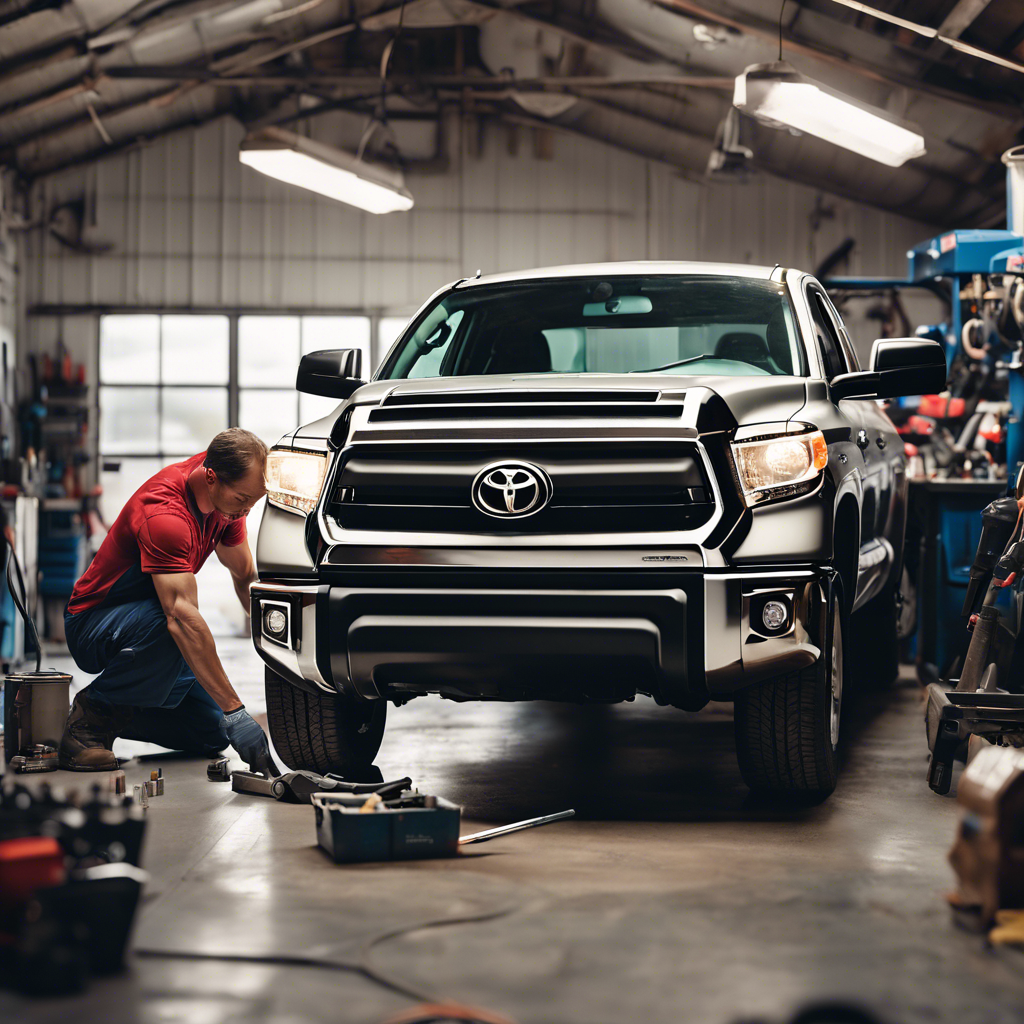The Toyota Tundra is a durable and reliable truck that has captured the hearts of many truck enthusiasts. However, like all vehicles, it can encounter some problems over time. Understanding how to repair Toyota Tundra issues is crucial for any owner looking to maintain their vehicle’s performance and lifespan. In this guide, you’ll find essential tips and insights to help you manage some of the most common repairs, ensuring your Tundra stays in optimal condition.
Understanding the Basics of How to Repair Toyota Tundra
Before diving into specific issues, it’s important to familiarize yourself with the basic components and systems of your Toyota Tundra. This understanding will not only aid in diagnosing issues but also empower you to perform basic repairs safely and effectively.
Regular Maintenance Checks
Preventative maintenance is key to avoiding costly repairs. Start by setting a regular maintenance schedule, focusing on critical components such as:
- Engine oil changes – Recommended every 5,000 to 10,000 miles.
- Brake inspections – Check pads and rotors every 10,000 miles.
- Tire rotations – Rotate tires every 5,000 to 7,000 miles.
- Fluid checks – Inspect coolant, brake fluid, and power steering fluid levels.
- Battery inspection – Clean terminals and check voltage regularly.
Common Repairs and How to Repair Toyota Tundra
Addressing common vehicle issues promptly can prevent them from escalating into major problems. Here we breakdown some of the Toyota Tundra common issues and the steps to resolve them.
Resolving Braking System Issues
The Tundra, like many vehicles, can experience wear and tear on its braking system. Common symptoms include squeaking brakes, a spongy brake pedal, or longer stopping distances.
- Inspect the brake pads for wear. If they are thin, replace them immediately.
- Check brake rotors for warping and replace if necessary.
- Flush and replace brake fluid every two years to maintain proper hydraulic pressure.
Addressing Suspension Problems
A faulty suspension can reduce comfort and safety. You may feel excessive bouncing or hear knocking sounds while driving.
- Inspect shock absorbers and struts for leaks or damage.
Consider replacing them if you notice excessive movement or wear. - Check and replace worn-out bushings.
- Examine wheel alignment and adjust as needed to ensure even tire wear and proper handling.
Steps for Specific Tundra Repairs
Let’s explore specific elements of how to repair Toyota Tundra for more intricate issues that may arise.
Repairing the Exhaust System
If you notice rattling noises or decreased engine performance, the exhaust system might be the culprit.
- Lift the vehicle securely and inspect the exhaust components for visible damage or rust.
- Tighten any loose exhaust clamps or gaskets to reduce noise.
- Replace punctured pipes or failed catalytic converters promptly.
This can improve both emissions and engine efficiency.
Cooling System Repairs
The cooling system ensures the engine remains at a safe operating temperature. Signs of trouble include overheating or noticeable coolant leaks.
- Regularly check for coolant leaks under the vehicle.
- Inspect the radiator for signs of corrosion or blockages.
- Change the coolant as per the owner’s manual to avoid rust and scale build-up.
When to Seek Professional Help
While the above repairs can be handled by a confident DIYer, there are times when professional expertise is necessary. Complex problems like transmission issues, electrical faults, or engine misfires require diagnostic equipment and skilled technicians. Understanding how to repair Toyota Tundra should include knowing when to reach out for expert assistance to prevent further damage.
Conclusion
Mastering how to repair Toyota Tundra involves understanding both routine maintenance and addressing specific repair needs as they arise. Keeping your truck in top shape not only extends its life but also ensures safety and reliability on the road. Regular checks and repairs will minimize the risk of serious issues, making your Tundra a trustworthy companion for many miles to come.

